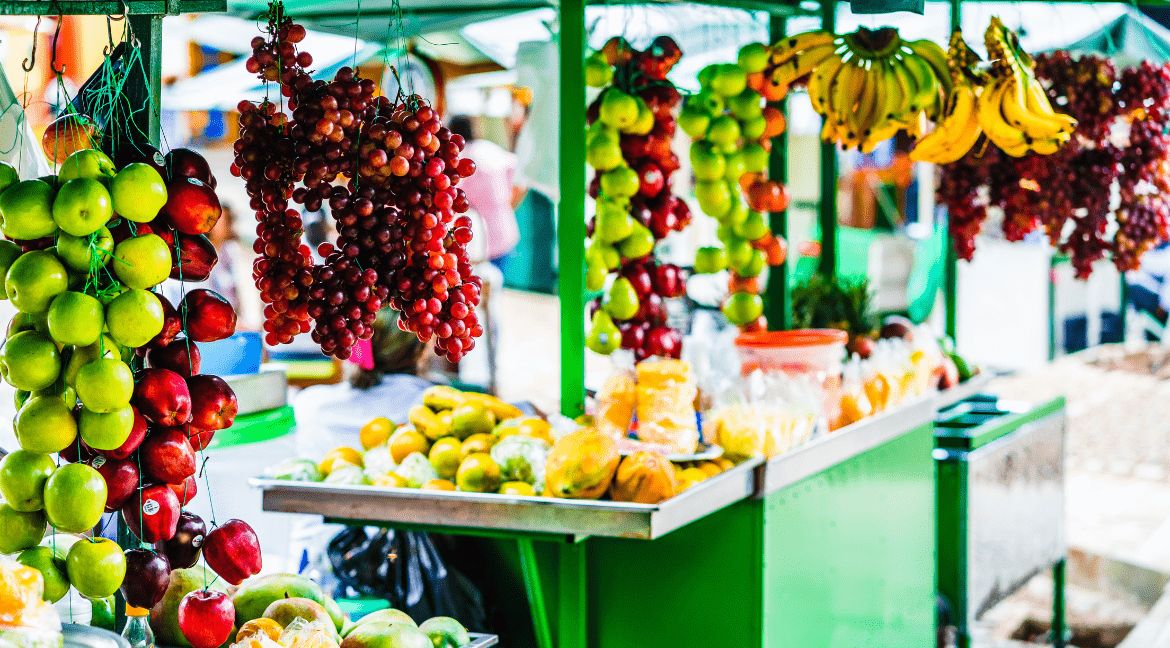When you move to Costa Rica, you suddenly find yourself in a whole new world. And by that, we mean the world of Costa Rica fruits. Among others…
Shopping at the feria, or farmer’s market, is an incredible way to ease into a new country, a new culture, a new cuisine, and a new language. So, we recommend going often, experimenting liberally, and enjoying as much as you can!
And with that, we introduce you to the world of Costa Rica fruits – from the easy-to-find, try-them-anytime kinds to the harder-to-find, you’ll-have-to-wait-until-they’re-in-season varieties:
Easy-to-Find Costa Rica Fruits
Let’s start with a few of the easier-to-find but still likely new-to-you fruits:
Chinese Guava | Guayaba China
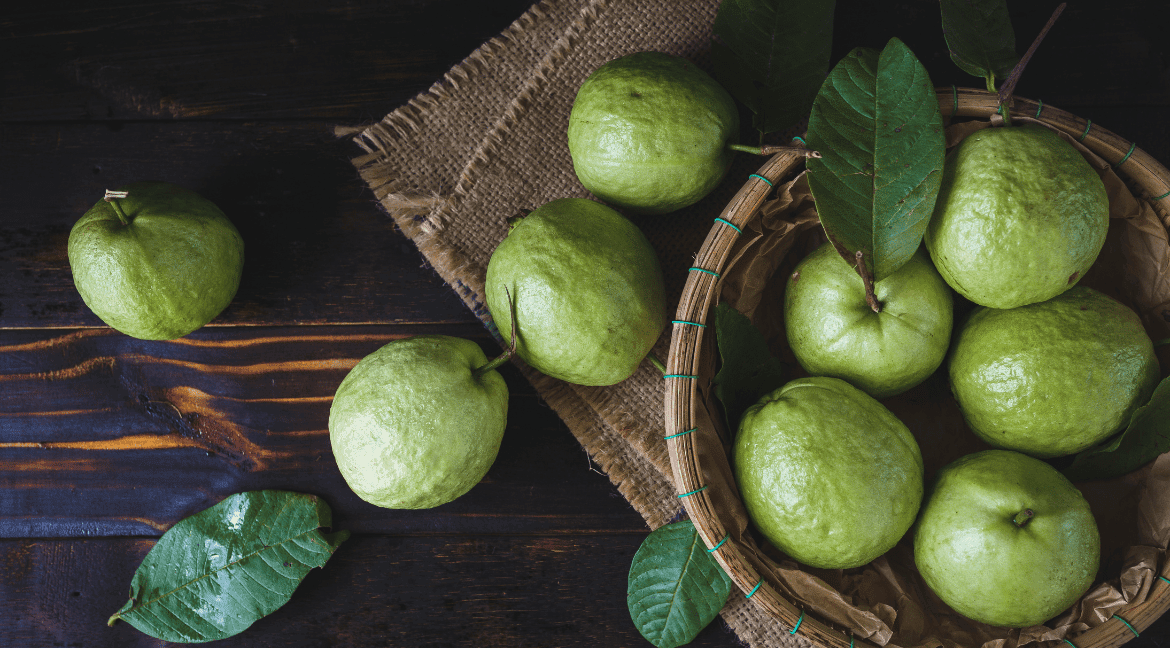
We’re not sure if “Chinese guava” is the real translation of guayaba china (gwie-yah-bah chee-nah), so please let us know if you know of a better one!
In any case, this fruit resembles a large cas – but much sweeter. It’s similar in experience to an apple: Simply wash and then bite in! Eat around the center but be careful of the seeds (again, like an apple).
Ground Cherry | Uchuva
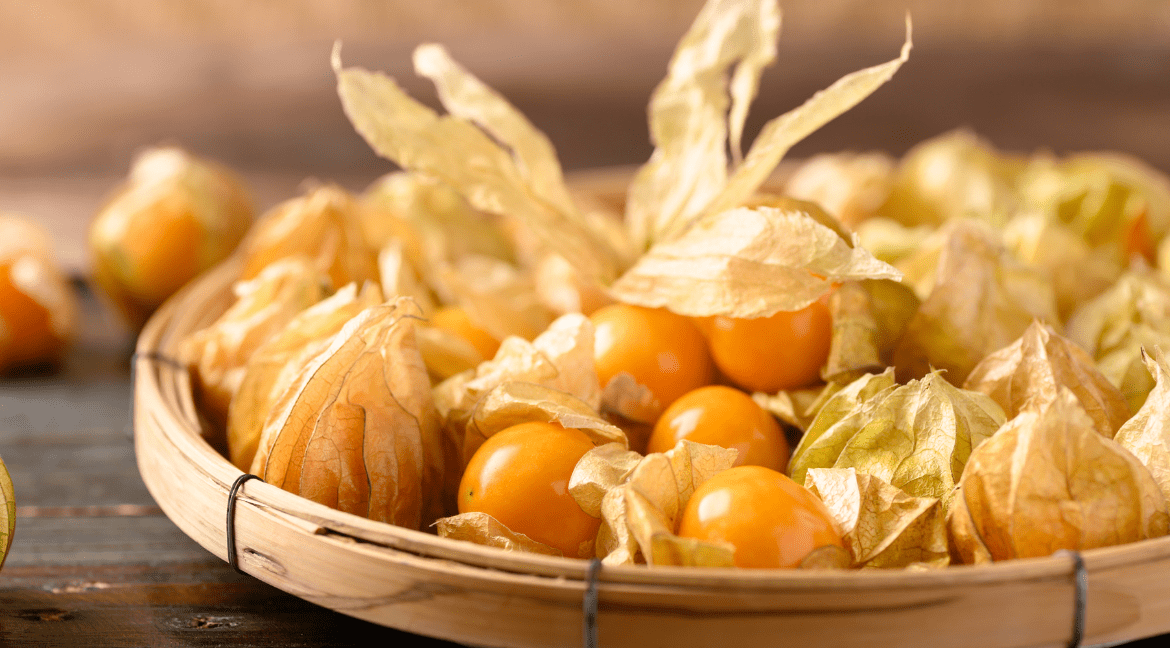
Sometimes called ground berry, uchuva (ooh-choo-vah, though often pronounced oo-choo-ah, sans v) is a tart-but-sweet little berry that is absolutely perfect for snacking!
You’ll know an uchuva when you see one, thanks to the papery surround reminiscent of a tomatillo or Chinese lantern. But inside, these little guys are all sweet juiciness; just be sure to choose soft, bright yellow-orange fruits, as that’s when they’re ripe.
Guava | Guayaba
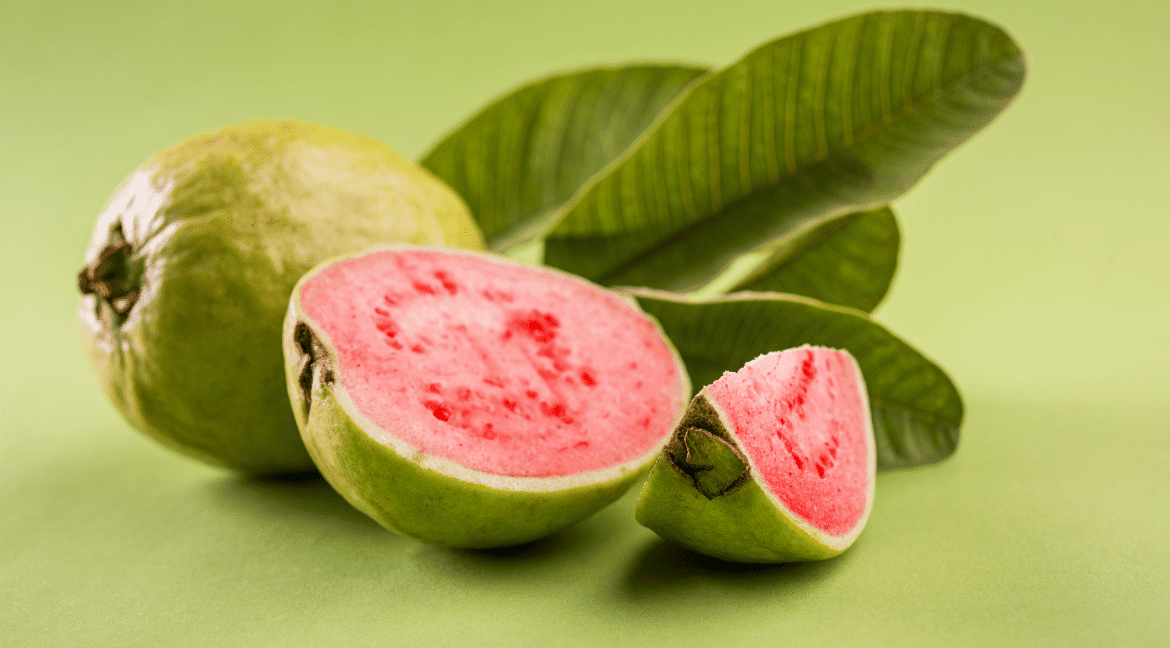
There are three “guavas” on our list, but this is the OG – the original guava of Costa Rica fruits! Its bitter rind protects a gorgeous, light pink interior with hard seeds. In Spanish, this fruit is known as guayaba (gwie-yah-bah) and should not be confused with guaba (gwah-bah), which is an entirely different fruit!
Anyway, guava is delicious and sweet and juicy and supple, and can be enjoyed either as a raw fruit, as a juice, or in a preservative/jelly.
Mango | Manga
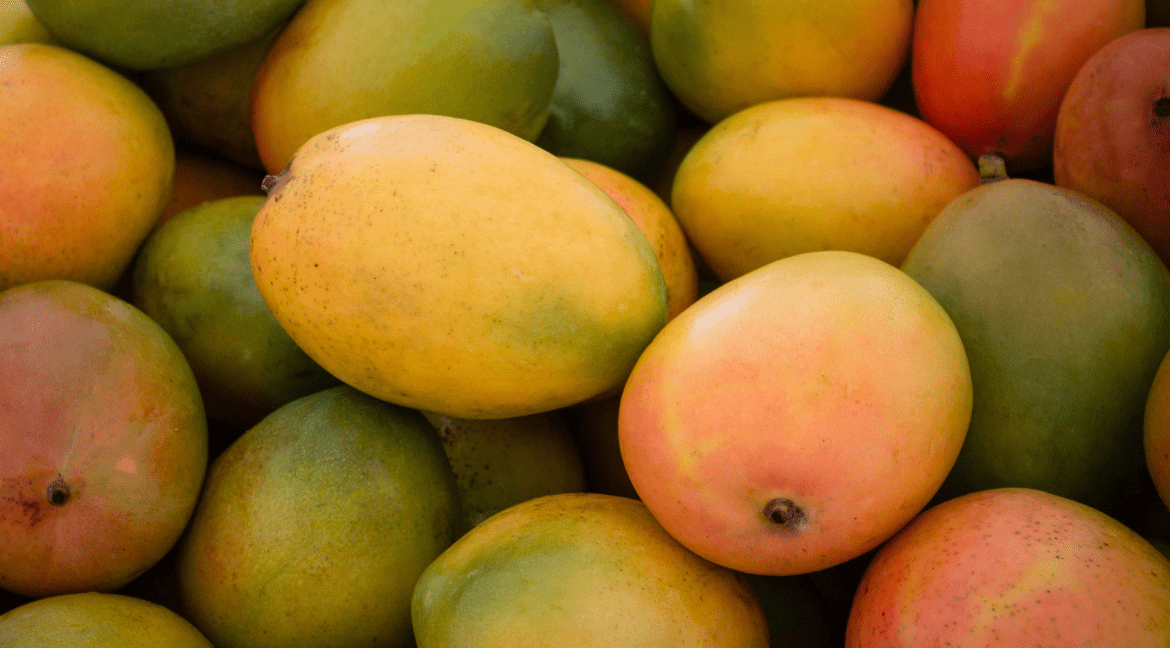
We know, we know – mango?! How original. Except, in Costa Rica, it can be!
The truth is that there are dozens (and dozens) of mango varieties here. And if you like mango, you’ll have a blast exploring them all. Some are sweeter, others are juicier, and still others have unique flavor profiles. Be sure to buy manga (mahn-gah), though; in Costa Rica, mango refers to a wilder variety of fruit with flesh that’s quite stringy.
Passion Fruit | Granadilla & Maracuyá

(This is maracuyá)
Just so you know, right off the bat, passion fruit is a textural experience. We’re talking crunchy seeds, coated in pulpy (some would say gooey) flesh, sealed inside a membranous pouch… And it’s delicious!
We know – it doesn’t sound like the most appetizing of Costa Rica fruits. But trust us, passion fruit is one of the good ones! You’ll need to know that there are two main varieties: granadilla (grah-nah-dee-yah, or sweet passion fruit) and maracuyá (mahr-ah-coo-ya, or tart passion fruit). The former, you break open and eat with a spoon (most people don’t eat the membranous pouch but it won’t hurt you, either) and the latter, you blend with water and sugar into a natural fruit drink.
Peach Palm Fruit | Pejibaye
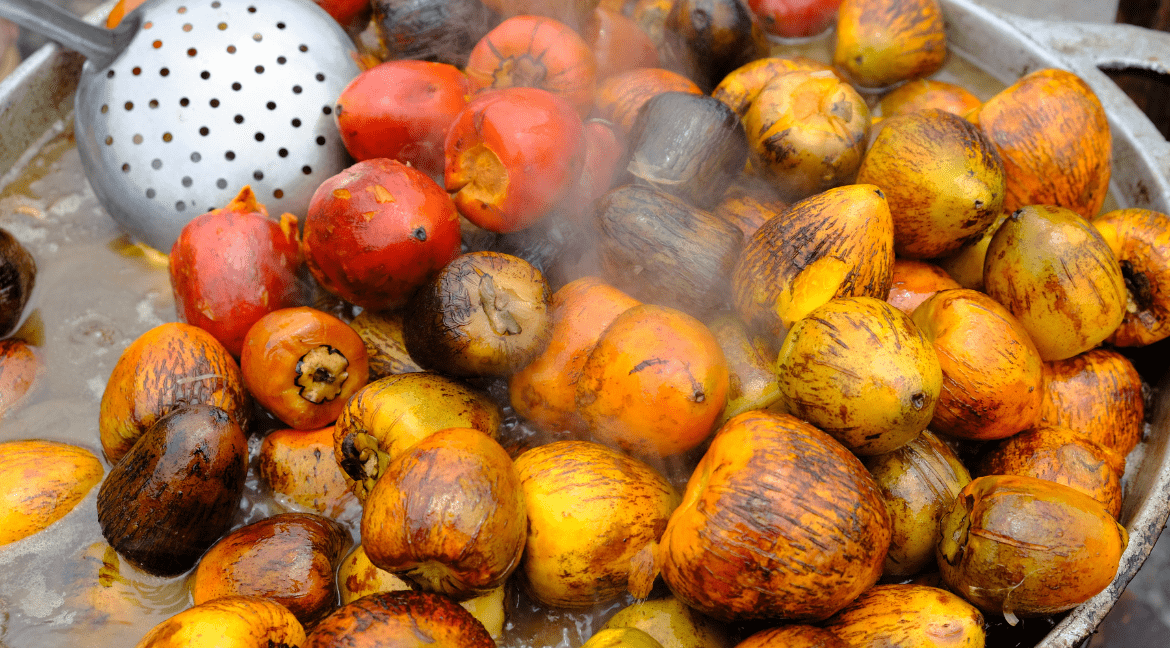
When you taste this one, you’ll say, “I thought this was a list of fruits!” So, yes, we’ll launch some pre-defense by saying that, of all the fruits on our list, pejibaye (peh-hee-bi-yay) is the least fruity. But it is, indeed, a fruit!
The fruit of a specific type of palm tree, these starchy fruits can be found year-round and almost everywhere, both raw and prepared. If you’ve never given them a try, we recommend purchasing prepared – they’ll be the pretty, persimmon-like fruits sitting in water – so you know what you’re after. Peel, cut in half around the center seed (the fruit will separate easily), and fill the inner seed holes with a mini-dollop of mayo.
Rambutan | Mamón Chino

What might look like little red-spike cacti are actually rambutan, an exotic (even to Costa Rica) fruit known as mamón chino (mah-mone chee-noh). And those spikes aren’t very spiky; you can pick these sweet treats up in your hand!
Rambutan is one of those fruits that has a season – and that season is “often.” While you won’t find they quite year-round, it’s never long before they grace feria displays again. To eat them, pick fruits that are on the very red-to-speckled black side, break them open with a dull table knife or a fingernail, and suck the lychee-like fruit off the seed. (Don’t eat the seed.)
Sour Guava or Costa Rican Guava | Cas

One of three “guavas” on our list, cas is the nearly undisputed king of refreshing fruit drinks. Tart, thick, and just a tad grainy (think: pears), this tropical pick is a Costa Rican favorite and almost a year-round offering on restaurant and smoothie menus.
If you’re purchasing cas (cahss) at the feria, choose fruits that are still firm but with a bit of give (again, think: pears). While some people do eat them plain, they are quite tart and will make you pucker! More commonly, Costa Ricans wash, cut, and throw into a blender with water and sugar, for a delicious alternative to lemonade.
Soursop | Guanabana

Where rambutan looks spiky but are perfectly docile, soursop looks mostly docile but can be spiky! Pre-warning: handle with care.
You’ll hear them described in many ways but personally, we think that guanabana (gwah-nah-bah-nah) is about as close as you come to vanilla ice cream that grows on a tree. Yes, it’s fruitier than vanilla ice cream, but it has a mellow, creamy thing going on that sends us to ice cream territory in our sensory memory. And it’s delicious!
While you can find and eat raw guanabana almost year-round in Costa Rica – simply cut it open and scoop out the flesh, but be careful of the large, black seeds! – it’s infinitely more popular when served as a fresh fruit drink. Order it with a milk base (un natural de guanabana en leche, ¡por favor!) and you’ll see what we mean about ice cream!
Spanish Lime | Mamón or Mamoncillo
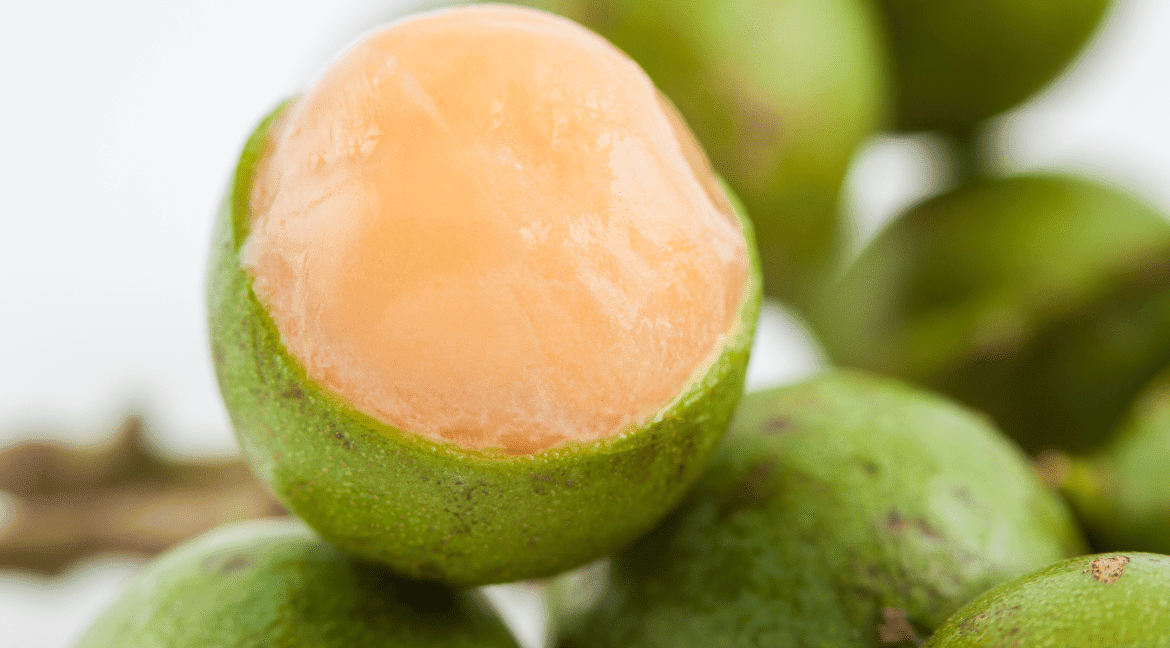
If you see something that looks like enormous bunches of grapes at the feria, it’s probably mamón (mah-mone). Similar to a lychee, these green-skinned Costa Rica fruits have a peeled-grape quality with a citrusy kick.
To eat lychee, peel off the outer skin (which is thick) and suck the translucent yellow pulp off of the seed. That’s all! They’re delicious, though, and easy to knock back like popcorn.
Tamarind | Tamarindo

Did you know that our town of Tamarindo shares a name with one of the most traditional Costa Rica fruits? ‘Tis true! The humble tamarind, or tamarindo (tah-mah-reen-doh), is a favorite for drinks. But you won’t often find it in its natural form.
Indeed, tamarindo grows in a brown pod – don’t get it mixed up with guaba (which you shouldn’t get mixed up with guava, which in Spanish is guayaba!) – and is often pre-prepped for ease of drink preparation. You’ll find it wrapped in plastic wrap, at almost any feria or supermarket. Just take it home, stir into cold water, add sugar, boil, strain, and let it cool. Delicious!
Harder-to-Find Costa Rican Fruits
And then, some of those harder-to-find, yes-there-are-seasons-in-Costa-Rica, you-might-have-to-have-some-luck-to-find-‘em fruits that are absolutely worth the hunt:
Brazilian Cherry | Pitanga
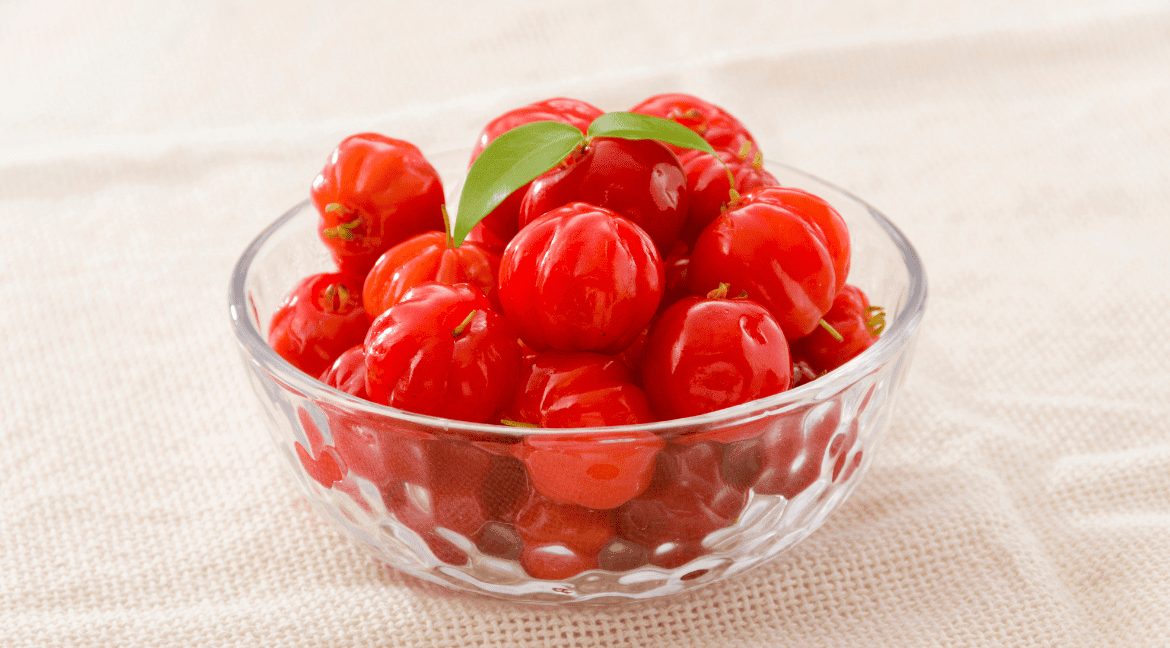
This is one of those rare fruits that grow in many places but isn’t often found at the feria or the supermarket. But, ask around – you may get lucky, with either a feria farmer or a neighbor!
In any case, Brazilian cherries or, as they’re known here, pitanga (pee-tahn-gah), are a bush fruit that can be described as both sweet and astringent, with a bit of tartness thrown in for good measure. Personally, we think they’re best consumed just like cherries: pick the darkest red fruits you can find, wash, and put in a bowl for a snack. They also make a good jam!
Cherimoya | Anona
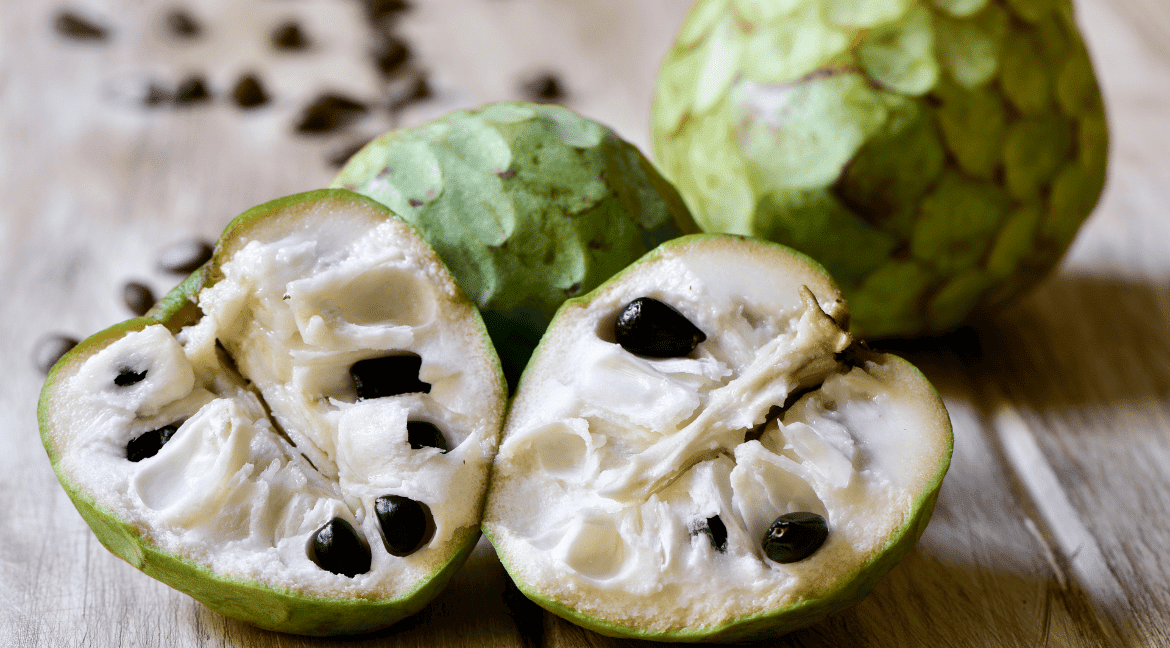
Cherimoya, a type of custard apple, can be pretty hard (but not impossible) to find at your local farm stand. If you happen upon them, though, be sure to try them! They’re mellow, sweet, and creamy, very similar to a soursop.
That said, anona (ah-noe-nah) is its own fruit. While soursop is most often blended into drinks, anona is more frequently eaten with a spoon and great gusto.
Dragon Fruit | Pitaya
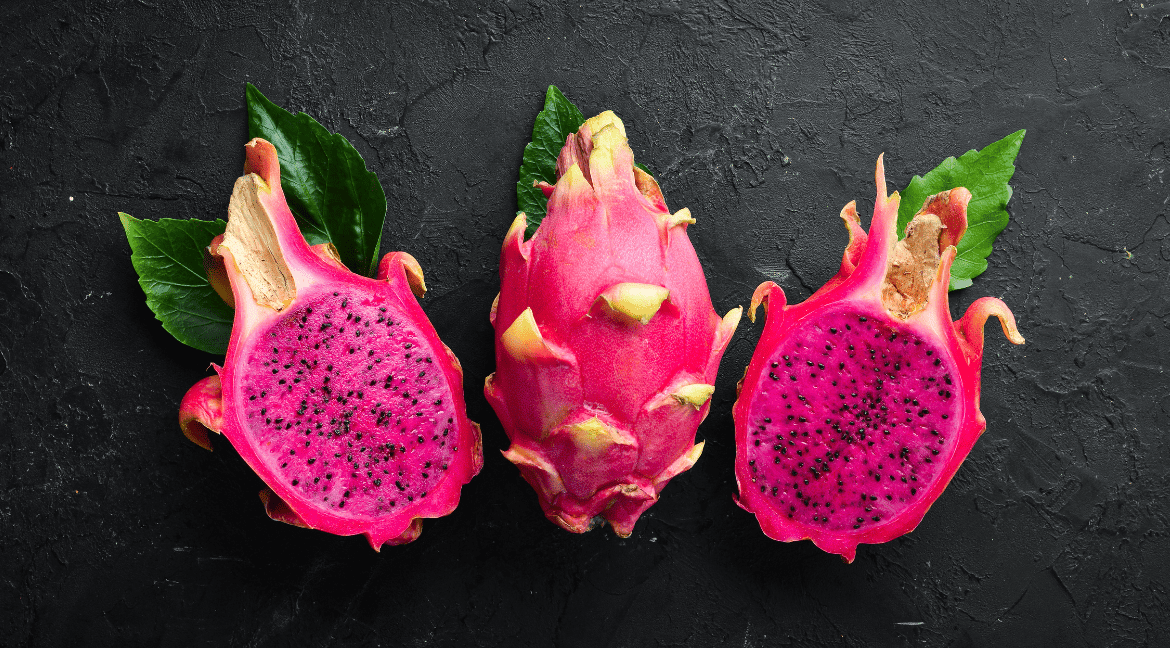
You may have heard of, or even eaten dragon fruit before, but did you know that Costa Rica has its own special variety? Known as the red-fleshed Costa Rican dragon fruit (species name Selenicereus costaricensis), pitaya (pee-tie-ya) is a striking yet delicate cactus fruit a bit reminiscent of kiwi.
Choose fruits that have just a bit of give, without being soft; the outer bits, including the green scales, should not have gone limp. Cut in half and scoop the deep pink flesh out with a spoon! You can also blend into a fresh drink.
Jocote or Mombin | Jocote
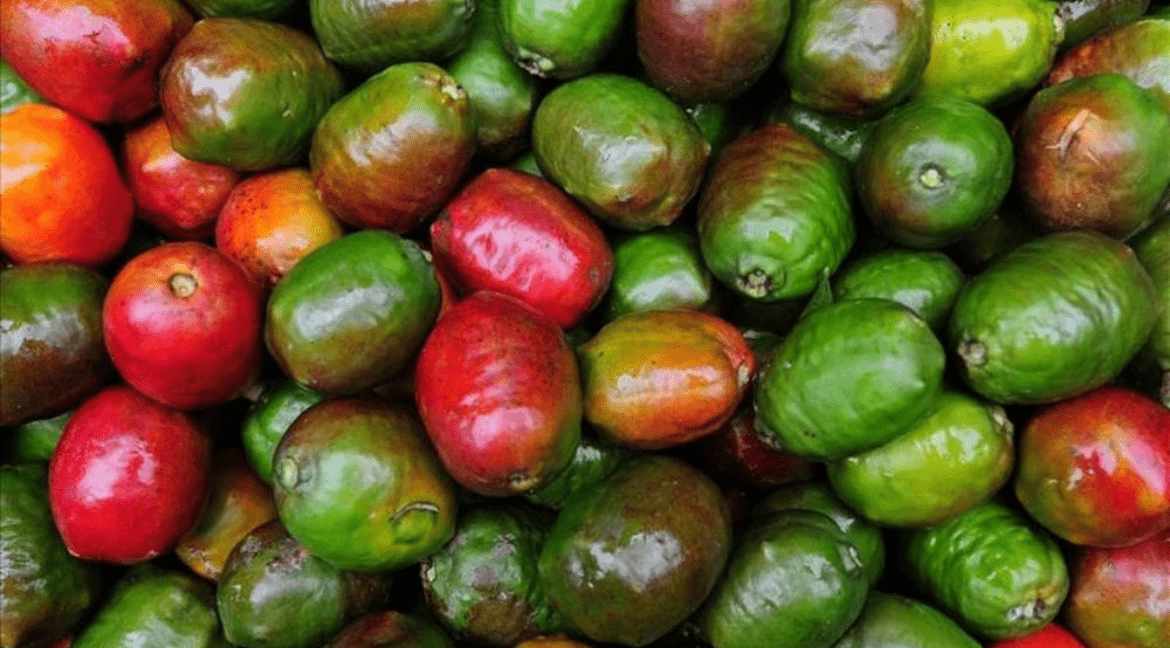
Super common at roadside fruit trucks and ferias, jocote (hoe-coe-tay) is one of our favorite seasonal delicacies in Costa Rica. Even better, there are two ways to eat them!
While many of us think of Costa Rica fruits as a sweet treat, many Ticos actually prefer to eat jocotes when “green,” or unripe: Slice them open, squeeze out a touch of lemon/lime juice and salt, and enjoy! Or, choose ripe jocotes – they turn orange and get soft – and down as a sweet, sweet treat. Be careful, though, as ripe jocotes are easily damaged when packaged and taken home!
Malay Apple | Manzana de Agua
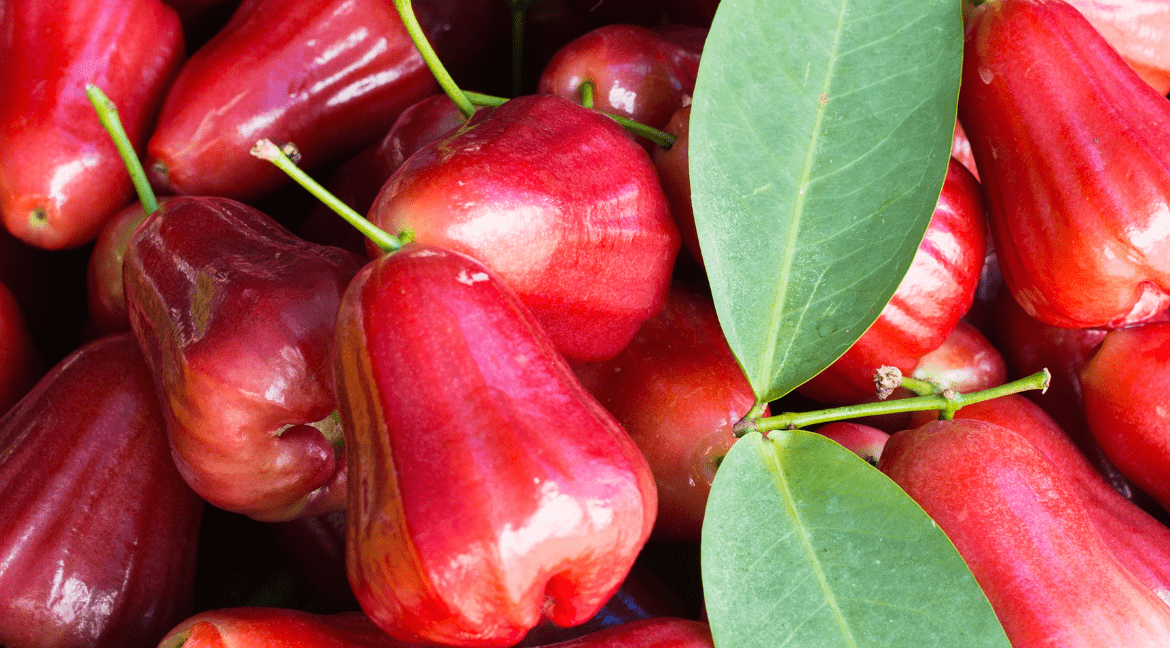
Malay apple, or water apple, may be native to the other side of the world, but it has now taken over the Costa Rican countryside. The trees grow everywhere and you’ll often see telltale signs of a manzana de agua (mahn-sahn-ah day ah-gwah): a thick tree canopy, surrounded by a carpet of pink flower needles (like pine needles, but much more supple).
Malay apples are best when crisp, but not mushy, so be sure to choose fruits that are deep pink/fuschia and have only a bit of give. Enjoy!
Mangosteen | Mangostan
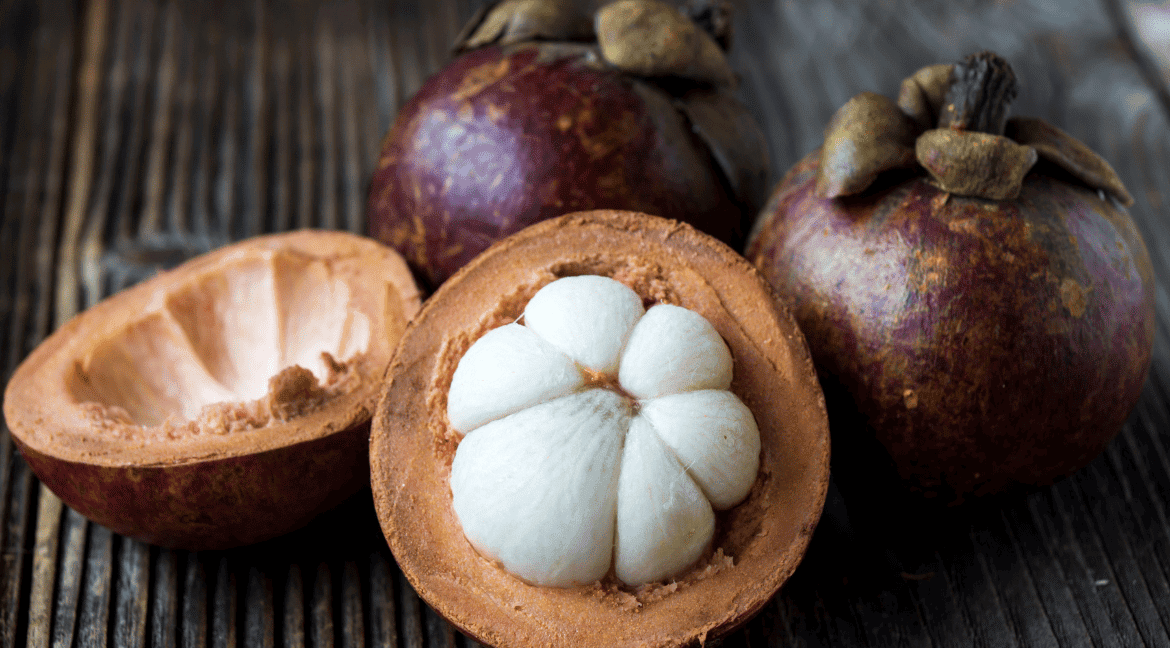
Once you try fresh mangosteen – and then look for it again – you’ll understand the concept of Costa Rica’s seasonal delicacies! This delicate, pulpy, and delicious fruit has a short season in Costa Rica, so buy plenty and buy often!
Choose mangostan (mahn-goe-stahn) that is deep purple and ripe in color. To eat, slice open the outer shell (it’s soft, not crunchy, but isn’t edible) and spoon out the inner sections. Some will have seeds, so filter accordingly!
Sapote | Mamey Sapote

There are many, many different types of sapote (sah-poe-tay) in this world; in Costa Rica, you’ll most frequently find mamey sapote, which features brown skin and pumpkin-orange flesh.
When you find a good sapote, it’ll be sweet and almost spicy. Think… pumpkin or sweet potato pie, in the best way possible. Sapote is most often eaten raw in Costa Rica, but it’s also great as a juice!
Star Apple | Caimito

Saving the best for last? Admittedly, caimito (kie-ee-mee-toe) is one of the first new-to-us fruits we tried in Costa Rica, so it has a place near and dear in our hearts. But this sweet, pulpy treat is definitely worthy of a spot on our list. Be forewarned, though: star apples are addictive and their season is short!
When you’re shopping, look for caimito that is deeply and uniformly purple. The fruit should almost bounce back when you squeeze it. When ready to eat, cut it open and spoon out each section of fruit. Don’t eat the seeds!
Planning to Move to Costa Rica?

Your new life in Costa Rica often begins with research. A lot of research, far beyond the basic Spanish before moving to Costa Rica – research into geography and lifestyle and other elements. We’re here to help, every step of the way.
At Blue Water Properties of Costa Rica, we’re committed to you. Not to selling you a property or spamming you with all the options, but to helping – genuinely and with good intent – to match you to the perfect property for your needs and wants. We thrive on relationships and promise the fastest communication and best services in the industry.
At Blue Water Properties of Costa Rica, we’re proud to offer some of the best Costa Rica Real Estate. We have both condos and homes, land and businesses for sale.
Go ahead – try us. Give us a chance to show off our expertise – and wow you with the possibilities! We look forward to it.
